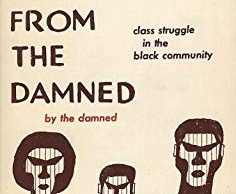Reproductive Rights in Black and White
Last month, a friend and I attended a fundraising event for Planned Parenthood Arizona (PPAZ). Given the distressing results of the 2010 mid-term elections, the reproductive rights picture in my state and elsewhere could not be any gloomier. Headlines in Arizona’s newspapers could well be taken straight from Margaret Atwood’s dystopic novel The Handmaid’s Tale, while at the federal level Roe v. Wade is arguably more imperiled now than at any time since 1973.
The fundraiser, held in a stunning and obviously child-free private home decorated in sharp edges and exquisite breakables, was a hit. My friend and I both committed to donate money, in part because of Arizona’s surprisingly progressive tax deduction for contributing to any organization that assists the working poor. But we also donated because it seemed patently obvious to all present that here in the Grand Canyon State, on any given day, we are teetering precariously on the edge of reproductive fascism.
Throughout the evening, I was acutely aware that the crowd was fairly homogeneous. While there were a number of men present, there were few people of color and not a single African American. Admittedly, Arizona is not known as a bastion of diversity. (Barry Goldwater and John McCain, anyone?) But I suspect something else was going on: despite Faye Wattleton’s historic presidency of Planned Parenthood Federation of America and the racial and ethnic diversity of the organization’s clientele, Planned Parenthood remains firmly entrenched in the (white) mainstream. That is, it is philosophically committed to choice, and this liberal approach has largely centered on abortion rights.
During the fundraiser, I talked with a staff member about my current research on infant mortality and maternal/child health. I asked her what, if anything, they were doing to address elevated infant death rates. Her response, that infant mortality is not on PPAZ’s agenda, did not surprise me. She offered the same argument that I have heard from other mainstream reproductive rights activists: there are simply too few resources and too many ongoing threats to a woman’s right to choose. No one organization can take on every issue, she told me.
There is certainly much truth to the claim that since the rise of conservative Christian fundamentalism and the proliferation of fetal images, pro-choice activists have been put on the defensive. But frankly, this explanation does not satisfy me.
Let’s review some statistics. In 2010, according to the CIA World Factbook the overall infant mortality rate in the United States was 6.14 deaths per 1,000 live births. This is higher than almost every other developed nation in the world. Unpacking these shameful figures, we learn that the rate for African Americans in the U.S. is 2.4 times higher than for non-Hispanic whites. The Office of Minority Health reports that in 2006, the infant mortality rate for African Americans was 13.4 deaths per 1,000 live births while the rate for non-Hispanic whites was 5.6. To put it bluntly, African American women are far more likely to watch their newborn babies die than white women are.
Clearly, as every public health official knows, who lives and who dies in the United States is profoundly intertwined with race and inequality. While the complex epidemiological reasons underlying high African American infant mortality rates are beyond my scope here, the facts of life and death for African American babies, and their mothers, are incontrovertible. Why, then, is there no national dialogue about infant mortality? Indeed, unless one lives in, say, Memphis, Tennessee—which holds the dubious distinction of having the highest infant mortality rate in the nation and has buried more than its share of tiny coffins—African American infant deaths are largely invisible.
Which brings me back to the vexing question of choice, or lack thereof. Can the embattled reproductive rights movement afford to ignore the problem of infant mortality? What can “choice” possibly mean in a world where so many wanted babies are dying of preventable causes? Should freedom for some women be secured with the tears of others? In the relentless quest for reproductive autonomy, don’t we give up crucial ground when we disregard women’s desire to be mothers and to give birth to children who will survive? Shouldn’t we strive for what Loretta Ross terms “unbreakable alliances” rather than single-issue agendas?
Do not misunderstand me. I will passionately defend with every breath in my body a woman’s right to abortion, and I will send my annual donations to PPAZ. After all, we live in frightening times, and Planned Parenthood serves millions of women and girls in need. (Annually, over 75,000 client visits in Arizona alone.)
But I will also stand with—and contribute money to—SisterSong, National Advocates for Pregnant Women, and other groups involved in the reproductive justice movement. These organizations are fiercely committed to feminist and human rights frameworks. They acknowledge persistent and embodied racial inequalities, such as those responsible for the deaths of too many babies. Most significantly, they understand that choice without justice is a hollow victory.




Pingback: Tweets that mention Reproductive Rights in Black and White | The Feminist Wire -- Topsy.com